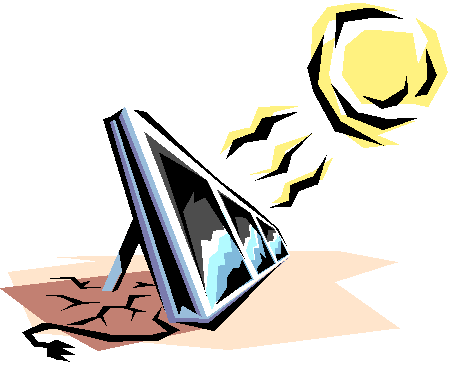|









| |
Solar Pool Heating System Components for Repair
and Replacement of Existing Systems
ecosystems
can get virtually any
replacement part for any of the existing major solar pool heating systems even
if not FAFCO. This
is especially the case for some of the major panel manufacturers and some
control systems.
- Panels, panel accessories, and mounting
hardware are usually readily available especially for the more common
manufacturers. With 30+ years in the solar
pool heating business, we have available sources throughout the nation who handle
other manufacturer's components. Manufacturer and dimensions are
essential to determine what you have.
- Control parts are may or may not be available. Some of the older control units may now be obsolete, including
FAFCO's
"pinch valve" systems, but give us a try nonetheless. We may be able to
find what you need, even if used, to get your system running again.
To help you find a part, we need manufacturer, model#, and as much descriptive
detail as you can give us.
- Realistically, however, it is probably best to replace some of the older controls with a
current model (see Solar Pool Heating Controls). Remember, many pool
solar system performance problems are directly caused by improperly functioning
or non-functioning solar controls that can be easily corrected.
Sensor wires, wire splices, and sometimes the sensors themselves are the weak
links in any control operation. Often the sensor wire is damaged
or wire splices
have simply corroded or come apart. This is most probable if wire in
underground and not protected in conduit. When in doubt it is always best to
check the wire and the individual sensors with an ohmmeter. Any reading
other than 0 or 1 is usually an indication that the sensor may be OK.
10K sensors (they read 10,000 ohms at 77o) are the most common but
some controls used 3K or even 1K sensors. Redoing the
sensor wire splices is recommended at least every 5 years. See system
troubleshooting and
maintenance.
- Miscellaneous components. Try us and we'll see what we can
find for you. Give us as much detailed information on the part in
question. A digital photo over email is often easiest but you can always
fax or send us a photo too.
Remember, from our many years of experience, most system problems are
installation-related. In other words, the system was either
undersized, components were installed improperly, the piping was done incorrectly, or a control
or sensors were not installed at all yet alone correctly. Please check out our
maintenance and
troubleshooting
sections.
Copyright © 2001
ecosystems. All rights reserved.
Page last updated:
May 28, 2014 |

